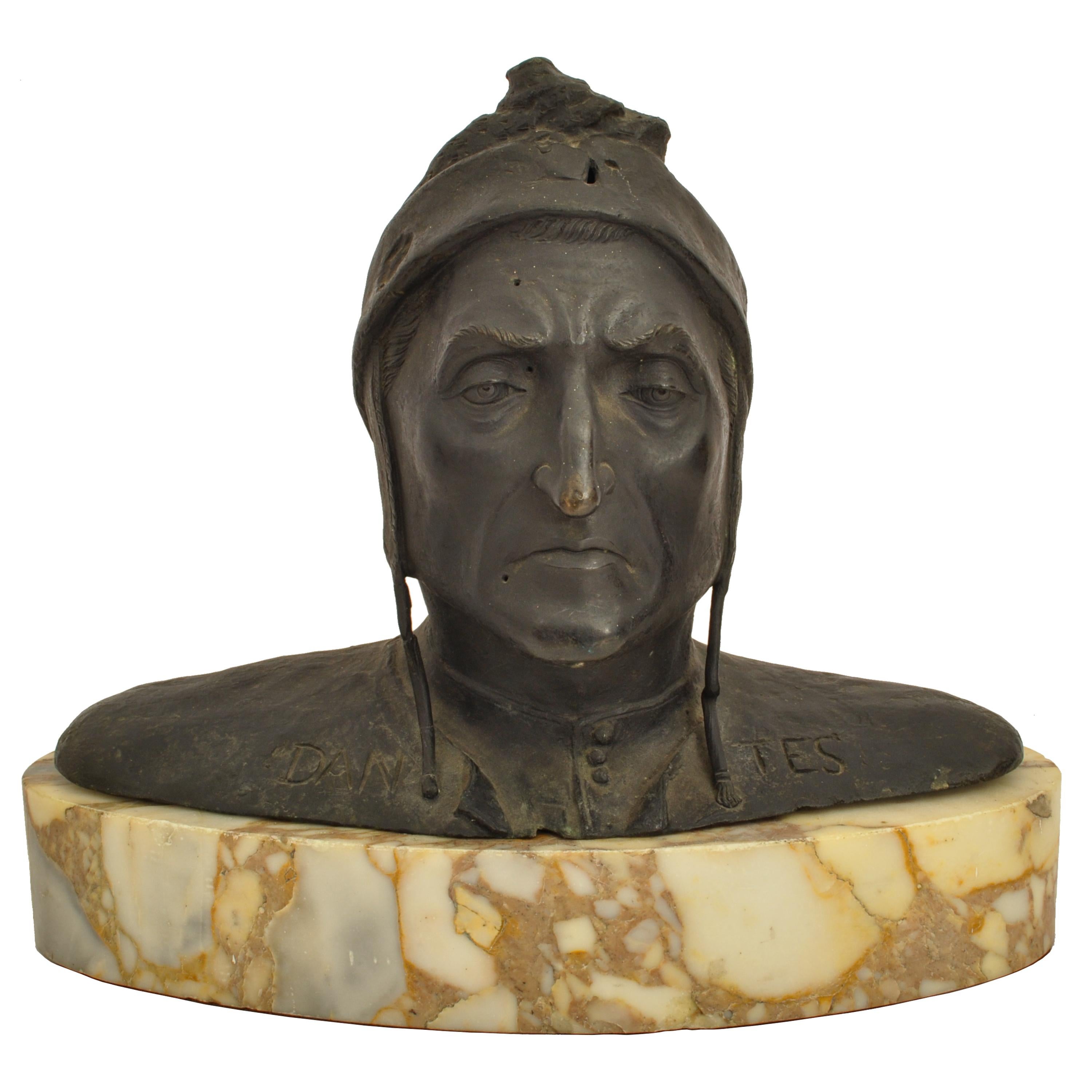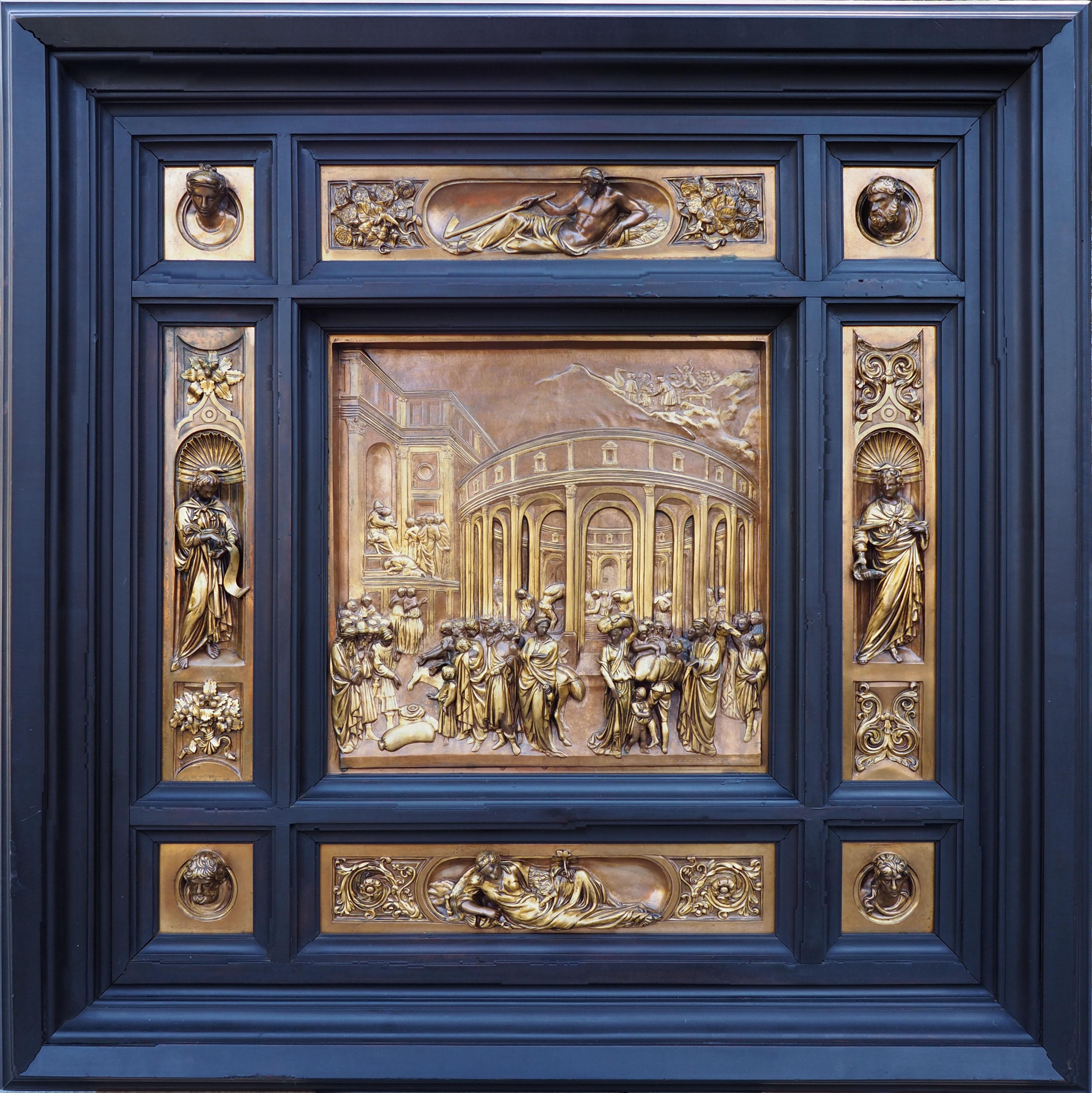Items Similar to Louis Ernest Barrias Bronze Sculpture
Want more images or videos?
Request additional images or videos from the seller
1 of 12
Louis Ernest BarriasLouis Ernest Barrias Bronze Sculpture1912
1912
About the Item
French dore bronze depicting a seated figure of a boy with tablet by Louis Ernest Barrias, French(1841-1905) Circa 1912
Modeled as a partially nude youth seated with a tablet and pen, incised E. Barrias and Susse Frères and Susse Frères pastille mark
Signed “E. Barrias” w/ Susse Freres Foundry Mark and reduction stamp..
Condition: Mint with superb chocolate brown patina.
Measure:
12.25" high x 8.25" wide x 7.2” depth
AVANTIQUES is dedicated to providing an exclusive curated collection of Fine Arts, Paintings, Bronzes, Asian treasures, Art Glass and Antiques. Our inventory represents time-tested investment quality items with everlasting decorative beauty. We look forward to your business and appreciate any reasonable offers.
Louis-Ernest Barrias (13 April 1841 – 4 February 1905) was a French sculptor of the Beaux-Arts school. In 1865 Barrias won the Prix de Rome for study at the French Academy in Rome.
Barrias was involved in the decoration of the Paris Opéra and the Hôtel de la Païva in the Champs-Élysées. His work was mostly in marble, in a Romantic realist style indebted to Jean-Baptiste Carpeaux.
He was born in Paris into a family of artists. His father was a porcelain-painter, and his older brother Félix-Joseph Barrias a well-known painter. Louis-Ernest also started out as a painter, studying under Léon Cogniet, but later took up sculpture with Pierre-Jules Cavelier as teacher. In 1858 he was admitted to the École nationale supérieure des Beaux-Arts in Paris, where his teacher was François Jouffroy. In 1865 Barrias won the Prix de Rome for study at the French Academy in Rome. Barrias was involved in the decoration of the Paris Opéra and the Hôtel de la Païva in the Champs-Élysées. His work was mostly in marble, in a Romantic realist style indebted to Jean-Baptiste Carpeaux.
In 1878 he was made a knight of the Legion of Honour, an officer in 1881, and a commander in 1900. Barrias replaced Dumont at the Institut de France in 1884 then succeeded Cavelier as professor at the École des Beaux-Arts. In 1900-03 he served on the Council for the National Museums. Among his students were Josep Clarà, Charles Despiau, Henri Bouchard, Fernand Hamar, and Victor Ségoffin.
Barrias was very influenced by the Art Nouveau style, which was prominent in art during the fin-de-siècle in France. The voluptuous women figures used in many of his sculptures are a product of this time and style. Nature and the erotic was, also, used often in this type style of art, which is seen in many of Barrias's works including, Nature Unveiling Herself Before Science. This piece was made in 1899, when this style was popular. Another sculpture by Barrias is Portrait of the Young Mozart. He also often used literary references in his sculptures (Fusco, Peter, and H. W, Janson, eds. The Romantics to Rodin. New York: Los Angeles County Museum of Art, 1980. Print).
Barrias died in Paris on 4 February 1905.
Please also consider Avantique’s eclectic bronze collection including Barye, Barrias, Mene, Moigniez, Paillet, Paillard, Fratin, Picault, and Cain among others. We strive to collect the highest quality sculptures in exceptional condition.
- Creator:Louis Ernest Barrias (1841 - 1905, French)
- Creation Year:1912
- Dimensions:Height: 12.25 in (31.12 cm)Width: 8.25 in (20.96 cm)Depth: 7.2 in (18.29 cm)
- Medium:
- Period:
- Condition:
- Gallery Location:Dallas, TX
- Reference Number:1stDibs: LU2724214281642
About the Seller
New to 1stDibs
Joined in the past six months.
No Reviews Yet
Vetted Seller
These experienced sellers undergo a comprehensive evaluation by our team of in-house experts.
1stDibs seller since 2024
Typical response time: 12 hours
- ShippingRetrieving quote...Ships From: Dallas, TX
- Return PolicyA return for this item may be initiated within 14 days of delivery.
More From This SellerView All
- Tall Franz Bergman Erotic BronzeBy Franz BergmannLocated in Dallas, TXFranz Bergman Erotic Patinated Bronze Of A Woman Putting On Her Robe. Wearing a shear (almost) see through lingerie under garment; the lady is going through the motions to put on her...Category
Early 1900s Art Nouveau Figurative Sculptures
MaterialsBronze
- Antoine Louis Barye Bronze Dromadaire Harnaché D'Égypte CamelBy Antoine-Louis BaryeLocated in Dallas, TXANTOINE-LOUIS BARYE (FRENCH, 1796-1875): A patinated bronze model of Dromadaire harnaché d'Égypte Signed 'BARYE' and stamped 'BARYE' by the Brame foundry Raised on naturalistic base...Category
1870s Figurative Sculptures
MaterialsBronze
- Charles Paillet "Medaille D'or" Bronze of Two Playful GoatsBy Charles PailletLocated in Dallas, TXA large Charles Paillet French (1871-1937) bronze of two playful goats "Medaille D'or" Here we have a fun and whimsical statue sculpture of two young goats playing in the grass. One...Category
1920s Art Deco Figurative Sculptures
MaterialsBronze
- Maximilien Louis Fiot 'Fr 1886 - 1953' Combat Des AiglesLocated in Dallas, TXMaximilien Louis Fiot (French, 1886 - 1953) A very large bronze animalier sculpture of combatant eagles in flight above an outcropping or rocks. The Eagles are fighting for their li...Category
1920s Art Deco Figurative Sculptures
MaterialsBronze
- Antoine Louis Barye Tigre Qui Marche 17”By Antoine-Louis BaryeLocated in Dallas, TXANTOINE LOUIS BARYE (FRENCH 1795-1875) Tigre Qui Marche; The Walking Tiger is an iconic Barye bronze depicting the fierce and elegant tiger Barye studied in the Paris zoo in the earl...Category
1870s Figurative Sculptures
MaterialsBronze
- Franz Bergman Bronze Mother And ChildrenBy Franz BergmannLocated in Dallas, TXFranz Bergman Partial Gilt and Cold-Painted Bronze Figural Groups comprising of a Mother and her children. The nude boy and girl are draped in a cold painted garland all bare foot. A...Category
Early 1900s Art Nouveau Figurative Sculptures
MaterialsBronze
You May Also Like
- Surreal Figurative Sculpture, "Lovers"Located in San Diego, CAThis is a one of a kind original bronze surrealist figurative sculpture by San Diego artist, Debbie Korbel. Its dimensions are 41" x 42" x 34". A certifi...Category
2010s Surrealist Figurative Sculptures
MaterialsBronze
- Antique Italian Grand Tour Bronze Marble Bust Sculpture Dante Alighieri 1880Located in Portland, ORA good antique Italian Grand Tour Bronze and marble bust of Dante Alighieri, circa 1880. The bronze is most likely Florentine and mod...Category
Late 19th Century Italian School Figurative Sculptures
MaterialsMarble, Bronze
- WHITE HINGED POEM DRESS,By Lesley DillLocated in New York, NYLESLEY DILL WHITE HINGED POEM DRESS, 1994 patinated bronze 55 x 37 x 30 in. 139.7 x 94 x 76.2 cm. Edition of 4Category
1990s Contemporary Figurative Sculptures
MaterialsBronze
- Growing in a Fragmented LandscapeBy Jennyfer StratmanLocated in Los Angeles, CAThere is a metaphorical interplay between the natural imagery international artist, Jennyfer Stratman, uses and its multiple meanings. While the human figure features strongly, it is...Category
21st Century and Contemporary Contemporary Figurative Sculptures
MaterialsMetal, Bronze, Enamel, Steel, Copper
- Cefiro - Renaissance Inspired Bronze Sculpture of an Acrobat set on Tall StandBy Jesus Curia PerezLocated in Chicago, ILCefiro is derived from the Spanish word for Zephyr, meaning a soft gentle wind which brings spring to the Mediterranean. The word also depicts beauty and playfulness. This figure p...Category
21st Century and Contemporary Contemporary Figurative Sculptures
MaterialsBronze, Steel
- The Story of Joseph from the Second Baptistery Doors, Florence (“The Gates of PaBy Ferdinand BarbedienneLocated in New York, NYFerdinand Barbedienne (Saint-Martin-de-Fresnay 1810 – 1892 Paris) after Lorenzo Ghiberti (Florence, 1378 – 1455) Signed at the lower right of the principal relief: F. BARBEDIENNE Provenance: Private Collection, USA. Barbedienne’s “Gates of Paradise” reliefs are one of the triumphs of nineteenth-century bronze casting and patination. The nine panels that comprise our example are half-size reductions of the famous originals by Lorenzo Ghiberti, made for the Baptistery of Florence and now housed in the Museo del Opera del Duomo. Mounted in an impressive, mullioned frame surround, our work is an exceptional exemplar of the Renaissance Revival, the broadly influential style and movement that infused architecture, design, and artistic culture in the latter half of the nineteenth century. The central scene, The Story of Joseph, is perhaps the most celebrated of the entire series depicting as it does seven episodes from the Biblical narrative integrated into a single composition: Joseph cast by his brethren into the well, Joseph sold to the merchants, the merchants delivering Joseph to the pharaoh, Joseph interpreting the pharaoh’s dream, the pharaoh paying him honor, Jacob sending his sons to Egypt, and Joseph recognizes his brothers and returns home. The surrounding reliefs—two vertical figures in niches, two recumbent figures, and four portrait heads in roundels—are as well faithful reductions of Ghiberti’s original bronzes on other parts of the doors. The maker of these casts was the renowned 19th-century French fondeur Ferdinand Barbedienne. Gary Radke has recently written of this great enterprise: “The Parisian bronze caster Ferdinand Barbedienne began making half-sized copies of ancient and Renaissance sculpture in the 1830s. His firm benefitted enormously from the collaboration of Achille Collas, whom Meredith Shedd has shown was one of numerous pioneers in the mechanical reproduction of sculpture. Their competitors largely devoted themselves to reproducing relief sculpture, but Collas devised a process for creating fully three-dimensional copies. A tracing needle, powered by a treadle, moved over the surface of a full-sized plaster cast or bronze of the original and triggered a complementary action in a cutting stylus set over a soft plaster blank…He signed an exclusive contract with Barbedienne on November 29, 1838, and won medals for his inventions in 1839 and 1844. Barbedienne’s half-sized copies of the Gates of Paradise were famous not only for their fidelity to the original, but also for the way their gilding…suggested the glimmering surface that was hidden under centuries of dirt. Some critics even saw Collas’s and Barbedienne’s work as ‘philanthropic, an exemplary adaptation of industry to the requirements of art, the artist, the workers, and the public alike.’ At 25,000 francs, Collas’s and Barbedienne’s reduction of the Gates of Paradise was singularly more expensive than any other item for sale in their shop. All the reliefs, individual statuettes, and busts were cast separately and could be purchased either by the piece or as an ensemble. Fittingly, Barbedienne’s accomplishment earned him the Grand Prix at the 1878 Paris Exposition Universelle, along with numerous other medals.” Three complete examples of the Barbedienne-Ghiberti doors are known. One, first installed in a chapel in the Villa Demidoff of San Donato near Pratolino, was later acquired by William Vanderbilt...Category
Late 19th Century Figurative Sculptures
MaterialsBronze
Recently Viewed
View AllMore Ways To Browse
Antique Sculpture
Antique Sculptures
Antique Sculpture Art Sculptures
Bronze Well
Antique Figurative Sculptures
Paris Art Bronze
Louis Style Art
Sculpture Fine Bronze
Antique Bronze Sculpture Art Sculptures
Bronze Sculpture Used
Family Bronze
Sculpture Paris Bronze
Antique Bronze Sculpture Signed
Antique Bronze Figures Bronze
Antique Marble Sculpture Art Sculptures
Glass And Bronze Sculpture
Sculpture In Art Nouveau
Antique Glass Sculpture




